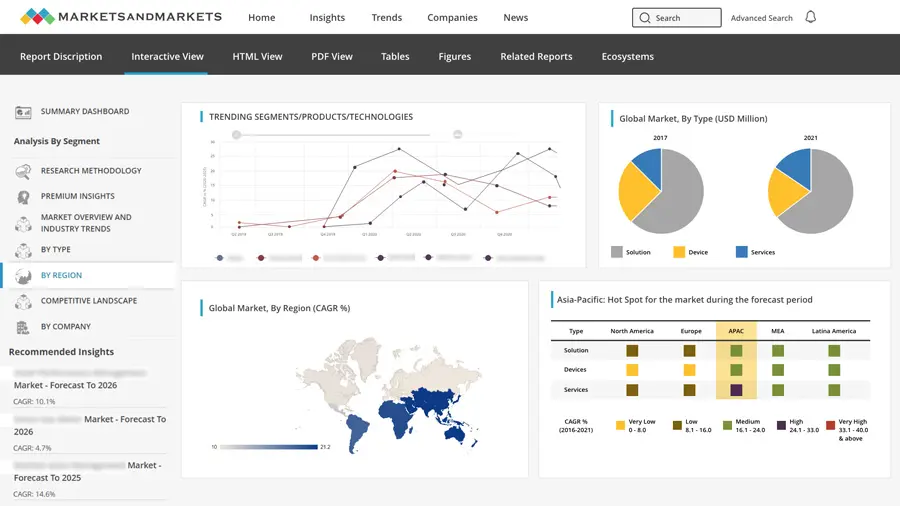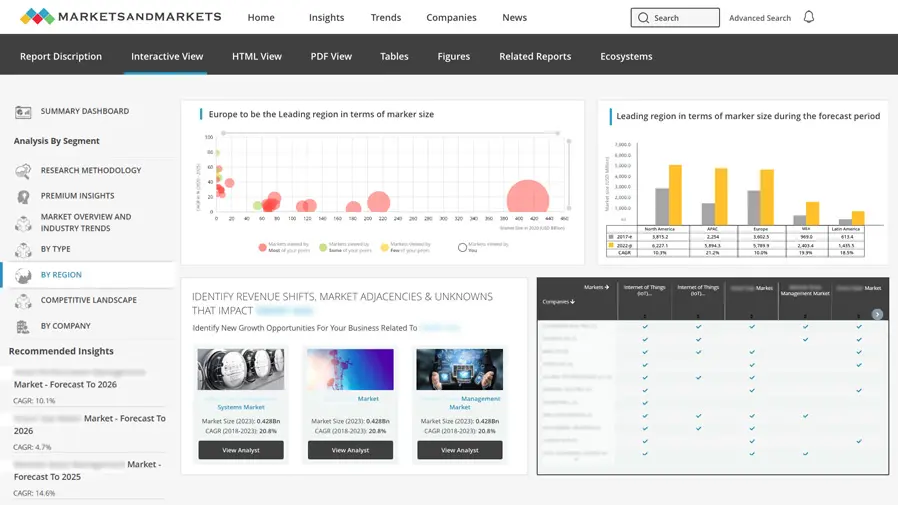Assembly Automation Market - Global Forecast To 2029
The global assembly automation market is driven by increasing demand for efficiency, precision, and scalability across industries such as automotive, electronics, and healthcare. Technological advancements in robotics, AI, and IoT are enhancing capabilities, reducing costs, and enabling flexible manufacturing processes. The market is further fueled by labor shortages and the push for Industry 4.0 adoption.
Additionally, the ongoing trend of digitalization and the rapid expansion of the electronics and semiconductor manufacturing sectors are expected to create significant opportunities for industry players. However, the growing complexity of industrial automation systems and high initial implementation costs may restrain product demand soon.
Market Overview:
The market is segmented by product type, end user, and region, with a diverse range of products catering to different needs. North America, Europe, and Asia-Pacific are the leading regions in market share, driven by labor shortages and rising costs, demand for high precision and quality, and technological advancements.
Product Type
- Automated Guided Vehicles (AGVs): Enhance material handling efficiency by autonomously transporting components across the production line.
- Conveyor Systems: Streamline product movement and integration between assembly stages for continuous workflow.
- Industrial Robots: Perform precise, repetitive tasks, improving accuracy and productivity in assembly processes.
- Programmable Logic Controllers (PLCs): Provide reliable control and automation of machinery, ensuring smooth and coordinated operations.
- Vision Inspection Systems: Enable quality control through real-time defect detection and accurate component verification.
End User
- Automotive Original Equipment Manufacturers (OEMs): Implement assembly automation to enhance production efficiency and meet high-volume demands.
- Tier 1 Automotive Suppliers: Use automation to streamline component manufacturing and ensure consistency for OEMs.
- Automotive Ancillary Providers: Adopt automation to improve the production of specialized parts and support the automotive supply chain.
Region
- North America
- Europe
- Asia Pacific
- Rest of the World
Market Dynamics:
Driver: Expanding Adoption of 5g Technology to Aid the Equipment Demand
The growth of the assembly automation market is anticipated to be driven by the advancement of 5G wireless technology and its adoption across various industries such as fiber and textiles, pharmaceuticals, plastics, and infrastructure. Key trends in the factory automation market include industrial IoT, digitalization, and the rise of digital twins. The Internet of Things (IoT) plays a crucial role in automation technologies by enabling the development of efficient, cost-effective, and responsive system architectures. Industrial IoT (IIoT) solutions connect assets, provide rapid transparency, and enhance productivity. Additionally, IIoT and edge computing solutions streamline device management and shop floor software throughout their lifecycle.
Restraint: The shortage of skilled professionals and limited security awareness
The growth of the assembly automation market may be restrained by a shortage of skilled professionals and limited security awareness, along with the high costs of implementing factory automation systems. While industrial automation offers long-term cost benefits, significant upfront investments are required for technology deployment and employee training. Additionally, the market's fragmented nature makes it challenging to predict return on investment (ROI) accurately.
Opportunity: The growing trend of Industry 4.0
The integration of IoT, AI, and advanced robotics offers manufacturers the potential to create highly adaptive, intelligent production environments. Real-time data collection and analysis allow for predictive maintenance, process optimization, and more flexible production capabilities. As industries across sectors adopt these digital technologies, there is a significant opportunity for growth in the automation market, particularly in sectors like automotive, electronics, and healthcare.
Challenge: The need for skilled labor to manage and maintain advanced automation systems
As technology becomes more complex, finding employees with the necessary technical expertise in robotics, programming, and systems integration is increasingly difficult. Furthermore, the rapid pace of technological advancements means that companies must invest in continuous training and development programs to ensure that their workforce remains up to date, adding additional costs and complexity to operations.
Competitive Landscape:
Key players in the Assembly Automation market include:
- ABB
- ATS Automation
- Bastian Solutions
- FANUC
- Hirata
- Siemens
- Kuka
- Rockwell Automation
- ThyssenKrupp
- Yaskawa
Future Trends:
Integration of Artificial Intelligence (AI) and Machine Learning (ML):
Future advancements in AI and ML will transform assembly automation by enabling more adaptive and intelligent systems. These technologies will enhance predictive maintenance, real-time decision-making, and process optimization. AI-driven systems can detect anomalies, reduce downtime, and improve quality control, ensuring more efficient and responsive manufacturing environments.
Adoption of Collaborative Robots (Cobots):
Collaborative robots, or cobots, are designed to work alongside human operators, improving flexibility and productivity on the assembly line. Unlike traditional industrial robots, cobots are safer, easier to program, and more adaptable to various tasks. Their growing use will allow manufacturers to optimize workflows and address labor shortages, particularly in industries requiring high precision and customization.
These companies focus on innovation, strategic partnerships, and acquisitions to enhance their market presence and product offerings.
Recent Developments:
- June 2024: Rockwell Automation, Inc. introduced RapidLaunch, a new platform providing a standardized, scalable automotive controls solution that is globally recognized and supports multiple languages.
- June 2024: B&R Industrial Automation showcased adaptive solutions for the MedTech and Pharma sectors at ACHEMA 2024 in Frankfurt. The presentation featured AI-enhanced, IIoT-connected adaptive automation technology designed to address challenges in the assembly and packaging of medical devices and pharmaceuticals.
- June 2024: Panasonic Life Solutions India launched the country's first AI-powered MINAS A7 Servo System, designed to cut human operation time by 90%. The system offers superior motion performance and precise automatic tuning, capabilities that were previously attainable only through human expertise.
- March 2023: Bastian Solutions Private Limited showcased an array of products and presentations at the Promat trade show, held from March 20-23. Their booth featured a live system demonstration, integrating advanced technologies such as autonomous vehicles, the Bastian Solutions Smart Pick AutoStore, Tompkins Robotics tSort, Bastian Solutions conveyors, and other innovative solutions.
- March 2022: Trane Technologies announced plans to expand its operations in Greenville County with a USD 30 million investment. This project includes adding around 300,000 square feet of manufacturing space to support the company's future growth initiatives.
















Growth opportunities and latent adjacency in Assembly Automation Market